One of the most pleasant parts of spring and summer is the arrival of butterflies. These colorful, lively, harmless insects tend to delight people and symbolize natural beauty. Like the sound of birdsong, butterflies put people at ease and give us a sense of peace in the outdoors. Many people who garden for wildlife are specifically interested in butterflies. Beyond that, many hobbyists used to collect butterflies, but this is (perhaps thankfully!) less popular nowadays. One myth I often hear about butterflies is that they only live for two days. Accordingly, people tend to use them as a poetic representation of the briefness of life. But is this really true? How long do butterflies live? Let’s explore!

The lives of butterflies
First things first, let’s cover some basics of butterfly natural history. That is, how they go about their lives, and how they make more of themselves via reproduction, what biologists call the life cycle. The life cycles of most insects involve different life stages in which the insect has distinct body forms and shapes.
Typically, these involve different roles, like eating, moving from one place to another, or laying eggs. Biologists call the changes required to move between those life stages metamorphosis. Butterflies have what is called complete metamorphosis, which takes place in four stages. In fact, the transition from caterpillar to butterfly is a popular example of metamorphosis that most people are familiar with.
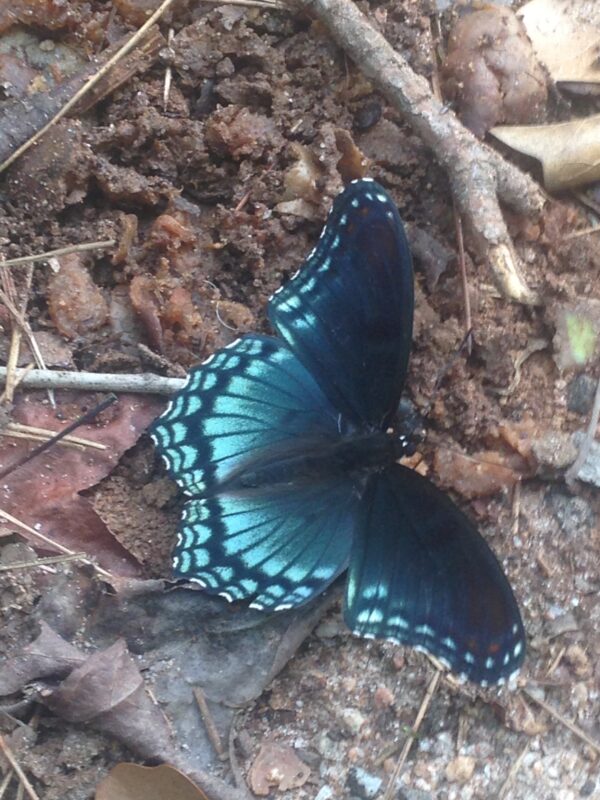
The four stages of a butterfly’s life cycle are:
- Egg stage – An egg laid by an adult develops in a safe location, then hatches into a caterpillar.
- Caterpillar stage – butterfly larvae are known as caterpillars; these eventually suspend themselves in a safe location as a pupa.
- Pupal stage – The stationary pupa rearranges itself internally to become an adult butterfly
- Adult stage – adult butterflies disperse (fly around), mate, and lay eggs
In order to know how long butterflies live, it’s important to consider each one of their life stages. If we add up the time that each one of those stages take, we can get a rough idea of their life span. Let’s start at the beginning of the list:
The Egg stage
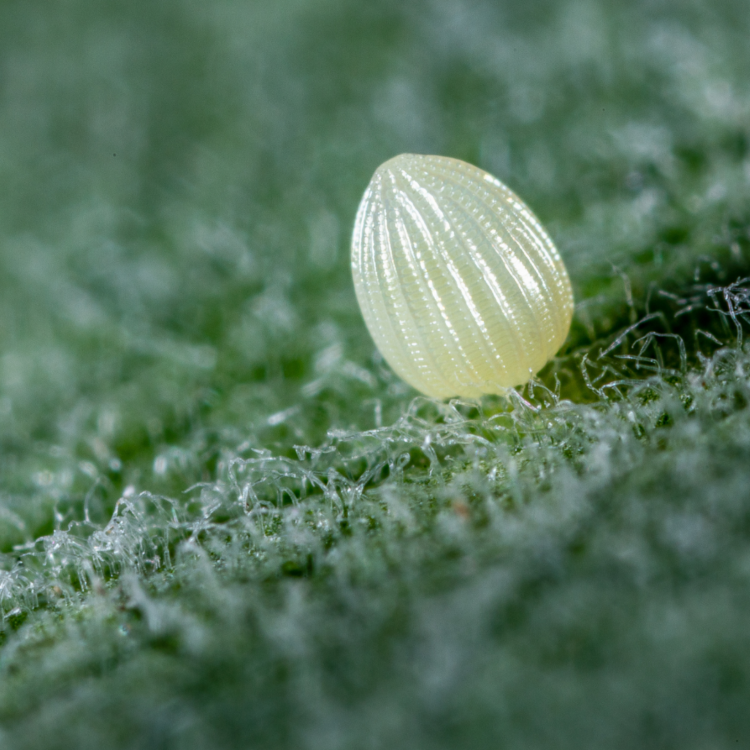
The egg stage is a relatively quick part of the butterfly life cycle. Eggs are defenseless, so caterpillars that take a long time to develop are vulnerable. Meanwhile, butterfly eggs are often tiny, so they don’t take long to get going. The ambient temperature, which influences the speed of biochemical reactions, is a major influence on the egg’s rate of maturation.
In hotter climates, the caterpillar embryos develop more quickly. Across differences in temperature and across species, most butterfly eggs hatch in between 4-10 days. This is already about as long as some people think butterflies live!
The larval (caterpillar) stage
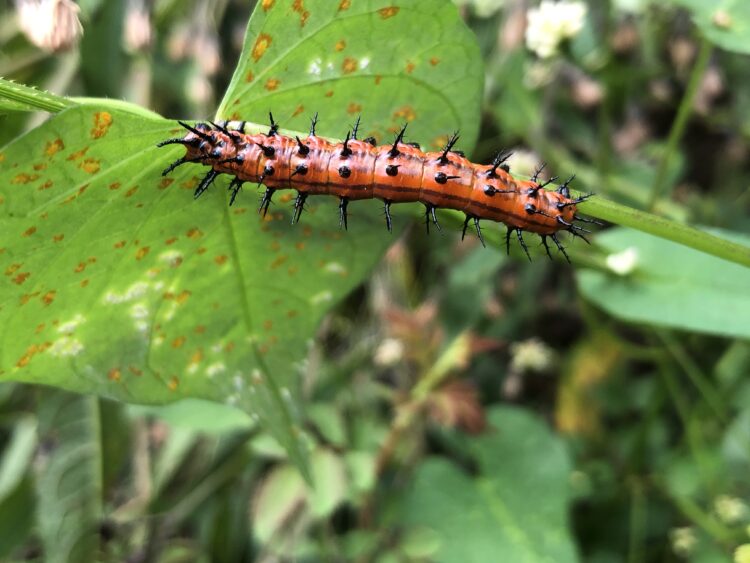
Caterpillars are the bodybuilders of the butterfly world. This is their “weight gain” phase; caterpillars have to eat enough food in this stage to go from a tiny hatchling to a large enough larva to pupate and become an adult. This can require increasing in size by as much as 100 times, and body mass by thousands of times!
In that sense, caterpillars are literally body builders; they eat constantly in order to build a new, bigger body. In order to do this, they voraciously feed on vegetation, although some species eat other things, like other insects! That much growth is hard to sustain with limited stretchiness of the skin. As a result, caterpillars molt several times during their bulk-up, shedding their skin and becoming a larger stage of caterpillar. These stages are called instars.
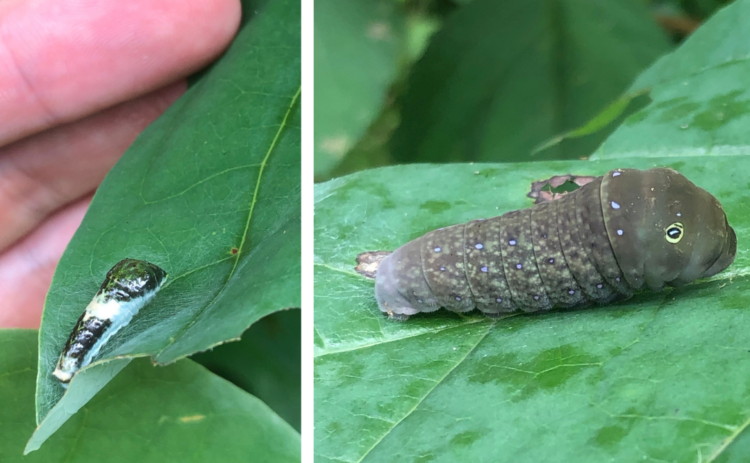
Eating a ton, gaining weight, and molting can take time. Because of this, the larval stage is typically the longest stage of a butterfly’s life cycle. The length of the caterpillar phase may depend on the amount and quality of food available.
As soon as the caterpillar has put on enough weight and gone through a certain number of instars, it’s ready to pupate. For most species in temperate regions, the caterpillar phase lasts from 2-5 weeks. For carnivorous caterpillars like the young of the Harvester butterfly (Feniseca tarquinius), their nutritious animal food can get them ready to rock in just over a week!
The pupal stage

Insects with complete metamorphosis go through a pupal stage to change from a wormy larva to a winged, hard-bodied adult. In butterflies, the pupa is called a chrysalis. When a caterpillar feels fat enough, it will anchor itself to hang from some object in a safe place, and shape its outer skin into a protective layer. Inside this casing, the butterfly is massively rearranging its innards in a liquidy format. After a period of a couple weeks, often 10-20 days, an adult emerges from the chrysalis.
The adult stage

The adult, reproductive form of an insect is known as the imago. In this case, the imago is the butterfly or adult stage. The butterfly’s main goal is to mate and pass on its genes to the next generation. For females, this involves finding a mate and then laying eggs on an appropriate food plant.
This doesn’t sound nearly as difficult as growing your weight by 1000 times, or rearranging your insides, does it? Being an adult butterfly has its own challenges, but it doesn’t take long to get business done. Because of that, adults often only live for a couple weeks, to the tune of 10-16 days for many species. As we’ll see below, there are notable exceptions to this rule.
So how long do butterflies live?
As you can see from the butterfly life cycle, butterflies certainly live more than a few days. In order to get through all four stages of their life cycle, a butterfly probably needs at least a month or so. Meanwhile, many species take longer to progress through those stages, or have relatively long life times as adults. So the idea that butterflies live super-short lives is busted. Nonetheless, their lives are still pretty short. As we’ll see below, conditions, species, and timing make a big difference in butterfly life-times. Generally speaking, however, no butterfly will live longer than about a year in the longest-case-scenario. Let’s see some other things that impact how long butterflies live.
The role of winter
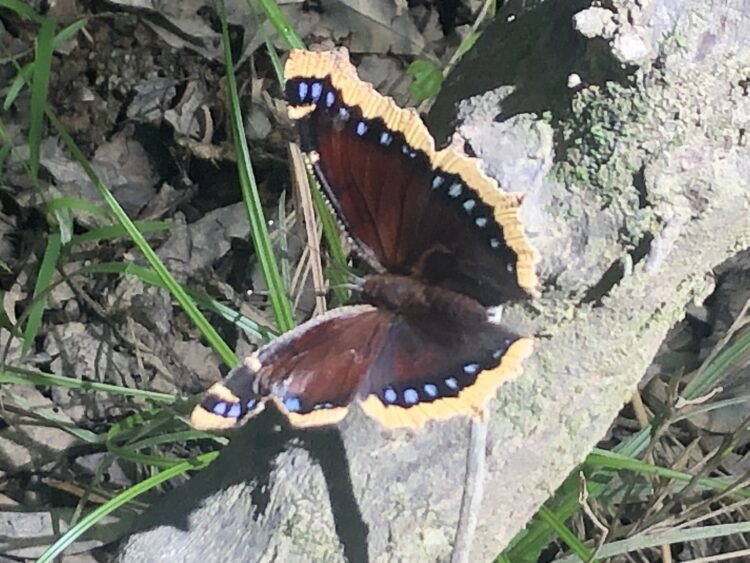
As you may have learned in my post on how insects get through the winter, many insects “pause” their progress through life stages. In other words, they freeze (sometimes literally) their development at a certain stage to survive winter. You can think of this like the “cryosleep” that sci-fi astronauts use to travel long distances.
By pushing the pause button on their lives, they exist for a long time without changing. This arguably increases their life cycle. For example, consider a caterpillar from an egg that hatched in the fall spends all winter as a pupa and emerges in spring. It may only have been active for 2 months or so total, but it was technically an egg 6 or more months in the past. Does that count as a longer life? If so, then some butterflies ‘live’ up to a year.
Migration
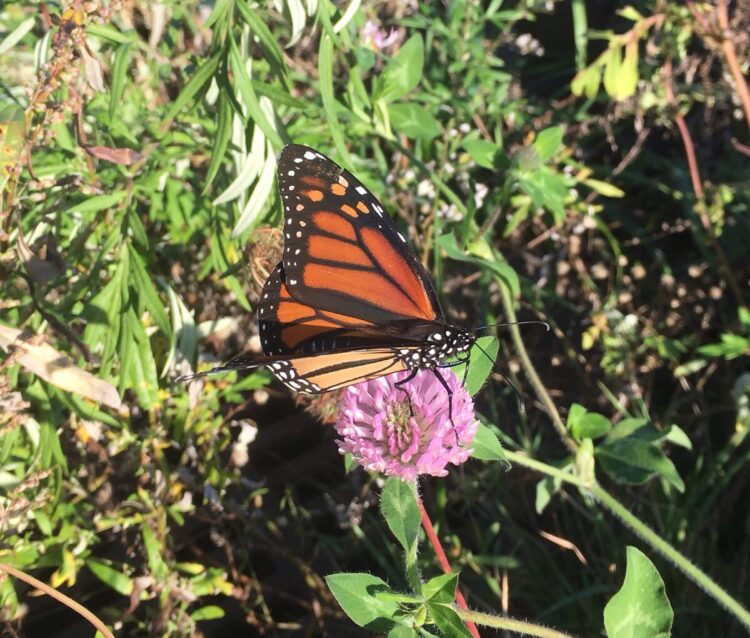
Some butterfly species, similarly to birds, migrate to warmer climates to deal with winter. These journeys require that adult butterflies travel long distances and wait out the winter before starting the journey North again. Consequently, those species have had to develop longer life spans for some generations of adults to complete all or part of their migrations.
This can mean unusually long life spans for shorter distance migrants like Fritillaries (Agraulis sp.), the Painted lady (Vanessa cardui), and Red admiral (V. atalanta). The reigning champion migrant butterfly in North America, however, is the monach (Danaus plexippus). These beauties travel thousands of miles from parts of the U.S. and Canada down to baja California every year. Although the trip is made by several generations, this also means individual adults that live for months at a time.
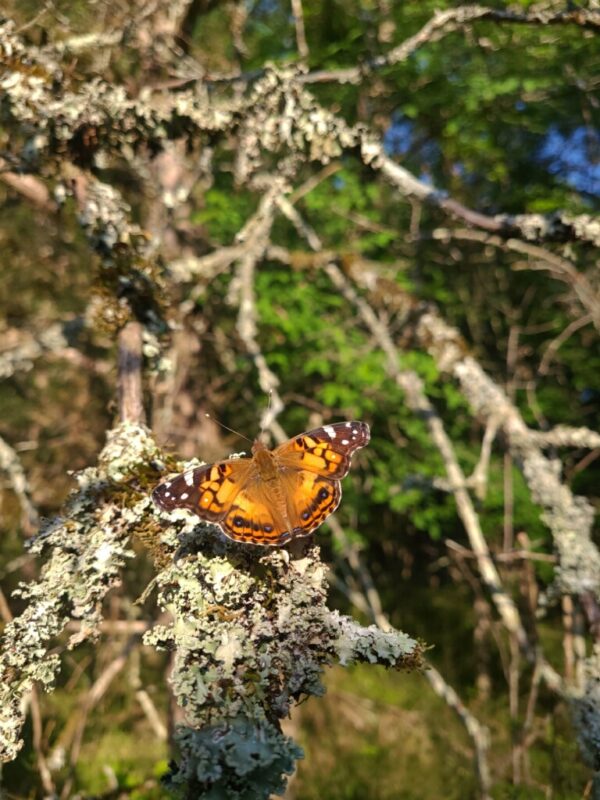
Body size
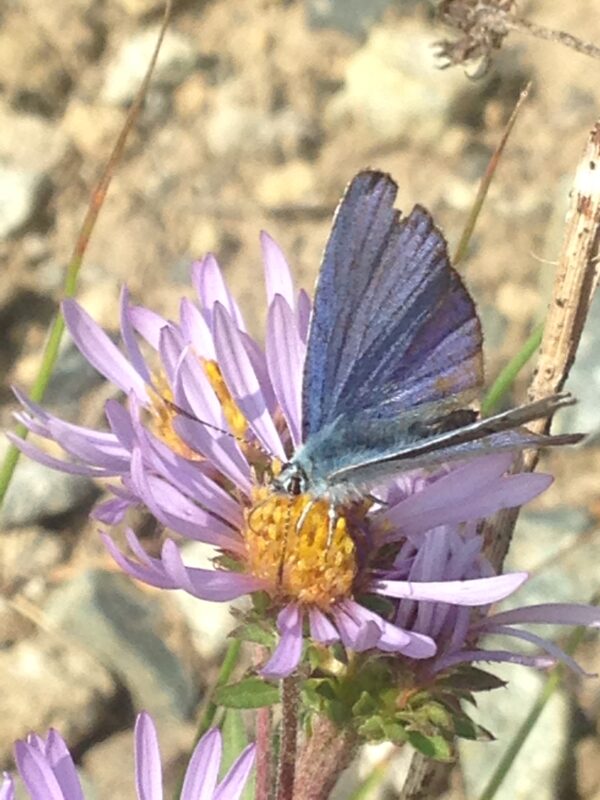
Generally, smaller butterfly species like skippers (Hesperiidae) and blues (Lycaenidae) tend to have shorter lifespans. Meanwhile, larger butterflies often have life spans on the larger side. The smallest butterfly species will live only about a week, sometimes less.
Climate

Butterflies in tropical climates don’t have to deal with winter or cold weather. These more stable conditions often free them to live longer life spans. Many tropical species of butterflies like longwings (Heliconius sp.) have typical life spans around three to nine months!
Further Reading
For interested readers, here are some books that I’ve found helpful for identifying butterflies and learning about their natural history, ecology, and behavior. There are lots of locale-specific field guides available for specific areas, but I have found broader, regional ones more helpful. More on that later!
Books on butterfly natural history and behavior
- Butterflies: A Complete Guide to Their Biology and Behavior by Dick Vane-Wright – An excellent, quick and thorough read by an avid conservationist and credentialed zoologist/butterfly expert from the UK.
- Butterflies: Their Natural History and Diversity by Ronald Orenstein – Conservationist Ronald Orenstein condenses a ton of scientific publications into an easy-to-follow exploration of butterfly biology. Excellent read with a lot of mind-blowing facts and gorgeous photos.
- Bicycling with Butterflies: My 10,201-Mile Journey Following the Monarch Migration by Sara Dykman – A biography-biology book following the incredible life cycle of migratory Monarch butterflies. Check out the Nature Guys Interview with the author for more on the wild adventure leading to this book.
Some darn good butterfly field guides
- A Field Guide to Eastern Butterflies by Paul Opler – This is one of my go-to’s for Eastern North America!
- Butterflies of the Pacific Northwest by Robert Pyle and Caitlin Labar – Gorgeous photographs and broad coverage of a huge number of butterflies in Western North America.
- Kaufman Field Guide to Butterflies of North America by Jim Brock and Kenn Kaufman – I love the great natural history accounts and interesting facts in Kaufman guides. This one did not disappoint.
- Butterflies of the World by Adrian Hoskins – A jaw-dropping coffee table book with incredible photographs of butterflies far beyond our own back yards. There is some great info on behavior and particular species’ natural history, but I was most sold by the photography.
Thank you!
If you found this post helpful, please let me know in the comments. As always, if you have other nature questions you’d like Naturalist Answers for, send a message via the Contact form.

